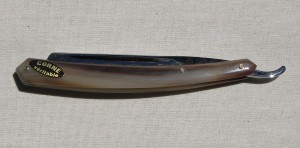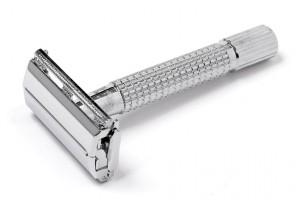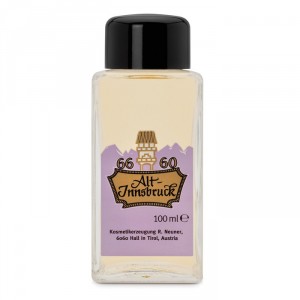The art of shaving
First, what brought me to wet shaving and why should it matter? Quite literally, because I had many itches to scratch. Ever since my teenage years and my first irregular, unscheduled shaves, I experienced discomfort: I first tried an electrical shave. My skin became red, warm and itchy despite the generous amount of aftershave I applied to it. I then tried regular wet shaving, and I automatically felt it would never try the electrical shave again. In fact, I’ve been sticking to wet shaving ever since. But for pretty much my late teenage years, my entire twenties and my very early thirties, shaving was still an uneasy moment, as I knew I was at significant risk of getting all sorts of blemishes and rashes. A variety of factors could have explained these inconveniences: sensitive skin, wrong shaving cream, bad blade or more to the point, overused blade. The truth is, all of these were actually valid explanations: my skin is definitely sensitive, the shaving cream may not have been the best, the blades lacked proper cleaning and after a while were just spreading impurities and germs.
 The solution to all these problems were once hinted at me by a good friend and a Free Software luminary, Georg Greve. As I was travelling to one of the first SFSCon in Bolzano several years ago, I realized I had forgotten my razor and my shaving equipment. Georg, who was at the first dinner the night before the event, told me how pleasant his shaving experiences were. I realized that just outside of my hotel was an old-fashioned boutique selling blades and cutting equipment. I entered, bought a Merkur travel razor with Bolzano double blades (not one blade over the other, but the actual “safety blades”, with one blade on a side of the razor and the other one on the other side). I got some Nivea shaving cream and aftershave, and off I went. My first two shaves were closer to a butchery than a shave. I showed up to the event with scars. I went back to Paris and had a dinner with friends. It was awkward for the first hour as they were looking at my face, pondering what kind of weird torture I had gone through. Thankfully I got much better, even though there’s an actual “bump in the road” here and there.
The solution to all these problems were once hinted at me by a good friend and a Free Software luminary, Georg Greve. As I was travelling to one of the first SFSCon in Bolzano several years ago, I realized I had forgotten my razor and my shaving equipment. Georg, who was at the first dinner the night before the event, told me how pleasant his shaving experiences were. I realized that just outside of my hotel was an old-fashioned boutique selling blades and cutting equipment. I entered, bought a Merkur travel razor with Bolzano double blades (not one blade over the other, but the actual “safety blades”, with one blade on a side of the razor and the other one on the other side). I got some Nivea shaving cream and aftershave, and off I went. My first two shaves were closer to a butchery than a shave. I showed up to the event with scars. I went back to Paris and had a dinner with friends. It was awkward for the first hour as they were looking at my face, pondering what kind of weird torture I had gone through. Thankfully I got much better, even though there’s an actual “bump in the road” here and there.
Traditional wet shaving is an art; it is usually practiced by using safety blades as described above or a straight razor (the large blade used in the XIX and XVIIIth centuries still used today in barbershops). Another aspect of this “art” is that each ingredient is usually thoroughly tested; but the entire list of requirements is actually simple. Some people are happy with one warm towel applied on their face before shaving, a good shaving soap and a splash of aftershave. Others will apply some preshave oil or cream on their warmed and wet skin; then lather the cream or the soap of a shaving soap on their beard with a brush; shave with precise and minuted movements; rinse, apply some anti-cuts Alun stone; apply an aftershave calming balm and then an aftershave splash as an eau de toilette. I’m somewhat in between these two (more on this below). The interesting thing, however, is that I always found that shaving “like everyone else” was quite expensive, mostly because of the blades: A pack of Wilkinson Quattro or the equivalent Gilette would cost me over 10 Euros in Paris for 6 blades (6 x 4 mounted blades on a plastic ensemble). Each of these 6 blades would at most last a week. At the end of the week my skin would just be one sorry, sad red rash. Now, I can get a high end Merkur set of 10 blades (10 two sided safety blades) for anywhere between 5 to 6.50 euros. Most of the time, I can pick for lower prices with other brands and I can reach 1.50 euros for 10 Gilette blue blades. While I still keep a tube of nice Portuguese shaving cream around, I use the exquisite, old-fashioned crafted Martin de Candre shaving soap: a box that will last me over 2 years when shaving 5 times a week will last me about 2 years and cost 45 Euros max. Compare this with your supermarket bill of shaving creams.
And now, for my own list of super shaving ingredients. I encourage you to try a lot of them; I’ve only really tried a subset of what’s on the market. My advice would be, whenever you can, to rely on local and artisanal brands: they’re the best. Hence your picks will be different based on your geography:
- Blades: Merkur blades or Bolzano blades
- Pre-shave oil/soap/cream: To me the best one is Claus Porto’s Pre Shave Oil. Hard to find, but the Portuguese make among the best soaps and shaving products in the world.
- Brush: no real choice here; just don’t get one with synthetic hair
- Shaving cream: There are several things to consider, one of them being their price. If you don’t care about it, get the Claus Porto, standard, lavender or Oak Moss for around 10 euros. If you are looking for cheaper things the Nivea and Williams brand will be just fine for around 3 (!) euros a tube. Make sure your choice really creates a great foam and volume, on top of the scent, which is nice but never essential.
- Shaving soap: To some the world is divided between those who use Emacs, and those who use Vi. When it comes to shaving, the world is divided between those who use shaving soap, and those who use shaving cream. The feeling is different; you just cannot produce as much cream and foam with a soap than with a shaving cream, no matter how good your brush is. But you can reach the same level of comfort and performance while keeping your skin quiet and fresh with a soap. I can only recommend the Martin de Candre range of soaps. There are many others out there, the British E. Jagger and Penhaligon’s being among the best, or the American Stirling of Arkansas. To me however, Martin de Candre is so unbeatable that I don’t really have any incentive to invest in any other soap. Try a few and see for yourself.
- Alun Stone: this small white, translucent stone is easily found in France, but not in any other place. It is available for sale on Amazon (check the Osma brand)
 Last but not least, the after shave splash: I do keep an after shave soothing balm from Nivea just in case I would need it. However, on a daily basis, I am a great fan of the old fashioned Alt-Innsbruck after shave, made with real mint and tobacco extracts. Its secret is to provide an extremely fresh feeling while purifying the skin and killing off any beginning of a rash without you feeling any sort of razor-burn feeling. Its price is a bit high though, and I can only order it from a few online stores (20 Euros roughly for a flask lasting barely 3 weeks). It is a rarity. Thus, I tend to rely on cheaper alternatives such as the Aqua Velva by Williams (a month and a half, 3,50 Euros). Aqua Velva feels a bit like a menthol aftershave, really cools down the skin. Its history is a peculiar one, having been the standard aftershave of the US Army in the forties.
Last but not least, the after shave splash: I do keep an after shave soothing balm from Nivea just in case I would need it. However, on a daily basis, I am a great fan of the old fashioned Alt-Innsbruck after shave, made with real mint and tobacco extracts. Its secret is to provide an extremely fresh feeling while purifying the skin and killing off any beginning of a rash without you feeling any sort of razor-burn feeling. Its price is a bit high though, and I can only order it from a few online stores (20 Euros roughly for a flask lasting barely 3 weeks). It is a rarity. Thus, I tend to rely on cheaper alternatives such as the Aqua Velva by Williams (a month and a half, 3,50 Euros). Aqua Velva feels a bit like a menthol aftershave, really cools down the skin. Its history is a peculiar one, having been the standard aftershave of the US Army in the forties.
That’s pretty much it. You know almost everything I know on the matter. I forgot one thing though: If you can, call a barbershop, and ask for a real shave one day. You won’t regret it. It’s magical and a real relaxing experience. Enjoy!

Leave a Reply